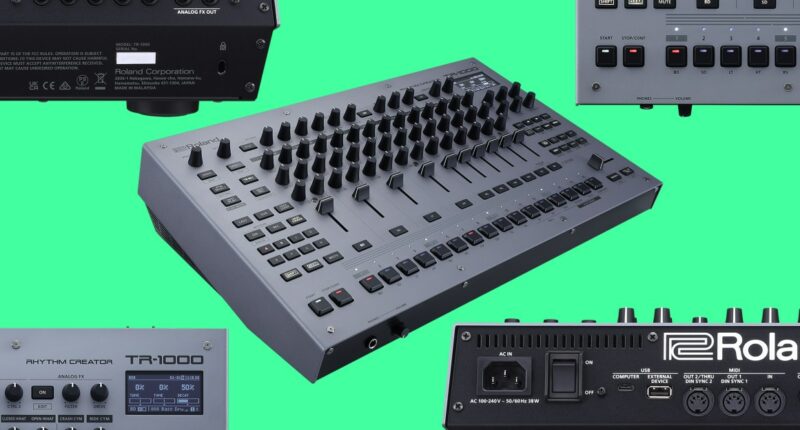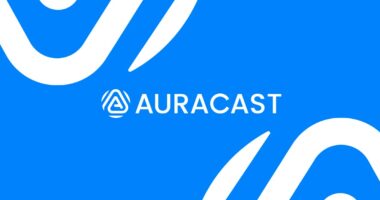Share this @internewscast.com
If Roland’s only contribution to music was the TR-808, it would still earn a revered spot in music history. The 808 is perhaps as crucial an instrument as the electric guitar, influencing hip-hop, electronic, and pop music for 45 years, and being used by icons such as Rihanna, Whitney Houston, Outkast, Talking Heads, and RP Boo. During the ‘80s and ‘90s, Roland was at the forefront of music tech innovation, producing legendary analog synths and groundbreaking drum machines.
However, throughout the 2000s, the company seemed to lose its way, producing forgettable digital products like the D-2 Groovebox and VariOS. In recent years, Roland has largely focused on reviving its former glory, but sometimes this came across as misguided or exploitative, while distancing itself from its analog legacy and pushing a subscription service.
Roland constantly invoked its heritage with its naming schemes, but these instruments had almost nothing in common with their namesakes.
Now, Roland seems to be truly honoring its past with the TR-1000 Rhythm Generator. This new release is a serious, albeit costly, instrument that genuinely captures Roland’s legacy by incorporating authentic analog circuits.
By the late 1980s, Roland had shifted almost entirely to digital, leaving behind the analog technology that had propelled its most legendary creations. Roland wasn’t alone in looking toward a digital future, but as new artists in the 2000s grew weary of the sterile, synthetic sounds that dominated the preceding decade, they gravitated towards affordable, used analog gear. Despite changing tastes and a burgeoning market for vintage synths, Roland continued its digital focus.
Roland eventually realized that people were not interested in simplistic keyboards with legacy names or novelty grooveboxes. Instead of modernizing analog classics or releasing authentic reissues, Roland invested in digital modeling to replicate analog sounds. For decades, the company had committed to digital technology and was hesitant to change course. Additionally, working with analog circuits is challenging, particularly since many key engineers from the 1980s had moved on.
Roland frequently leveraged its storied past in its product names—MC-808, SP-808, SH-201, SH-01, and more variations of Jupiters and Junos than one might expect. However, these new instruments shared little resemblance to their legendary predecessors.
It wasn’t until 2014 that the company finally seemed to get the hint and released the TR-8, which it billed as a spiritual successor to the 808. But this wasn’t some retro analog throwback. It was a garish all-digital affair that marked the beginning of what I like to call Roland’s “close enough” era. Using its Analog Circuit Behavior (ACB) modeling technology Roland released a slew of instruments that attempted to recreate its analog classics through emulation. Consensus is that they sound good, but people clamored for rereleases of the real thing.
Behringer happily cashed in on the demand by building analog recreations of the TR-606, TR-808, TR-909, and TB-303. Meanwhile Korg was delivering modern classics like the Minilogue, the playfully affordable Volcas, and reissuing vintage icons like the Arp Odyssey and 2600.
But Roland seemed content to sell $500 pintsized emulations of its most popular synths as part of its Boutique line (and charge you an extra $150 if you had the audacity to want to play your new synth with a keyboard).
Then in 2018 it introduced Roland Cloud. This subscription-based collection of virtual instruments and soundpacks is certainly the front runner for Roland’s most hated product. Customers felt burned by disappearing licenses, buggy software, and complicated membership structures. And, if your subscription lapsed, it could cut off access to addons for hardware synths like the Gaia 2.
Which brings us to the TR-1000, Roland’s first analog drum machine since the TR-909 in 1983. The company painstakingly recreated the analog circuits of 16 of the sounds from the TR-808 and TR-909 using modern components. While there is a companion app, there’s no need to authorize your instrument through a subscription service to get access to the circuit bent digital 808 engine. There’s no distractingly gaudy lightshow like you’d find on the Aira family. And there are a ton of hands-on controls which hopefully means diving into Roland’s notoriously arcane menus should be kept to a minimum.
The TR-1000 feels like Roland actually listened to its customers for once. It’s delightfully devoid of gimmicks, serious looking and, based on the demo videos at least, sounds great. Initial reaction from reviewers and fans has been overwhelmingly positive. People on Reddit calling it “beautiful, focused, professional,” “the last drum machine you’ll ever need,” and declaring “I have zero complaints, this thing looks fucking epic.” Now, if Roland really wants to make its customers happy, it will build a stripped down version that skips the ACB and samples, focuses only on the analog sounds and maybe costs less than $2,699.99.
Update October 5th, 2025: The description of addons for the Gaia 2 was corrected.







